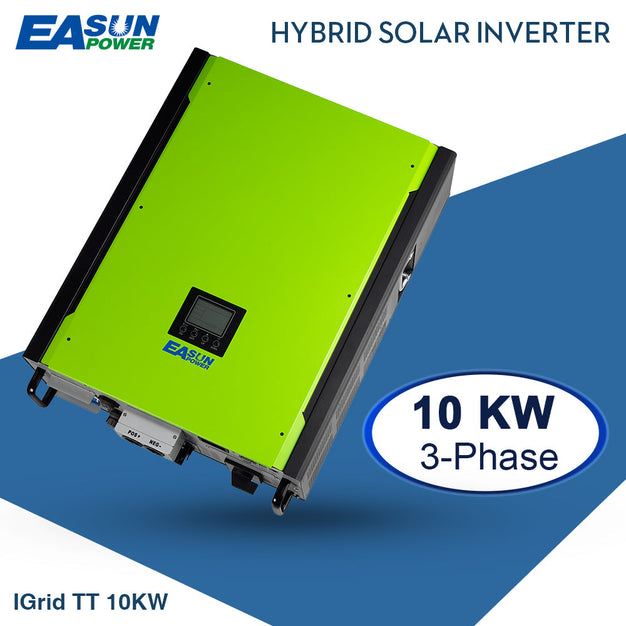Unlock the Secrets of Solar Inverters: Discover the Power of Flexible Energy Solutions!
As the world increasingly turns toward sustainable energy solutions, solar energy inverters with flexible power settings have emerged as a key player in harnessing the power of the sun. These devices are essential in converting the direct current (DC) produced by solar panels into alternating current (AC), which is usable for household and commercial applications. With the growing interest in energy efficiency and personalized energy needs, solar inverters equipped with flexible power settings have gained popularity. These inverters cater to diverse energy requirements, allowing users to adjust their power output to suit their consumption patterns. This adaptability not only maximizes energy savings but also enhances the overall performance of solar energy systems, making them an attractive option for homeowners and businesses alike.

Understanding Solar Energy Inverters
Solar energy inverters play a crucial role in solar energy systems by facilitating the conversion of solar-generated electricity into a form that can be utilized by everyday appliances and integrated into the electrical grid. At their core, inverters are responsible for transforming DC electricity, which is produced by solar panels, into AC electricity. This conversion is vital because most electrical systems, including homes and businesses, operate on AC power. The functionality of inverters doesn’t stop there; they also manage the performance of solar panels, ensuring they operate at optimal efficiency while providing essential data about energy production and consumption. This makes them an integral component of any solar energy setup, bridging the gap between renewable energy generation and practical, usable electricity.
Features of Solar Inverters with Flexible Power Settings
Solar inverters with flexible power settings come equipped with several innovative features that enhance their functionality and adaptability. One of the standout features is adjustable power output, which allows users to tailor the energy production to their specific needs. This is particularly beneficial in households with varying energy consumption patterns, as it helps to optimize energy usage and minimize waste. Additionally, these inverters are often compatible with various types of solar panels, ensuring that they can be integrated into existing systems without significant modifications. Furthermore, many modern inverters support smart energy management systems, enabling users to monitor and control their energy consumption through mobile applications. This level of integration not only enhances the user experience but also contributes to a more efficient energy management strategy, making flexible power inverters a smart choice for both residential and commercial applications.
Benefits of Flexible Power Settings
The advantages of using solar inverters with flexible power settings extend beyond mere convenience; they encompass significant benefits that can enhance energy efficiency and reduce costs. One of the primary benefits is improved energy efficiency, as these inverters can adjust their output to match real-time energy demands. This capability can lead to substantial cost savings over time, as households and businesses are less likely to rely on grid power during peak hours. Additionally, flexible power settings allow for better energy management, enabling users to prioritize energy consumption based on their preferences and needs. For instance, during sunny days, excess energy can be stored or redirected, maximizing the use of renewable resources while minimizing dependency on traditional energy sources. This not only supports individual energy independence but also contributes to broader sustainability goals, making it a win-win for both users and the environment.
Functionality and Applications
The flexibility of solar inverters with adjustable power settings significantly enhances their functionality across various applications. In grid-tied systems, these inverters can dynamically adjust their output based on grid demand, providing an efficient way to contribute excess energy back to the grid. In contrast, off-grid setups benefit from the ability to regulate energy production to match the limited storage capacity of batteries, ensuring that energy is available when needed without overloading the system. Hybrid systems, which combine grid-tied and off-grid functionalities, also leverage flexible power settings to optimize energy distribution based on changing conditions. Residential applications, such as powering home appliances and electric vehicles, can seamlessly integrate these inverters to manage energy use effectively. Moreover, in commercial settings, businesses can use flexible power inverters to scale their energy production according to operational demands, thereby enhancing their overall energy strategy and sustainability initiatives.
Key Takeaways on Solar Inverters
Understanding solar energy inverters equipped with flexible power settings is essential for anyone considering solar energy solutions. These inverters not only optimize energy consumption and enhance efficiency but also offer a customizable approach to energy management that can cater to individual needs. As we move toward a more sustainable future, integrating flexible power solutions into our energy systems will play a crucial role in meeting diverse energy demands. Whether you are a homeowner looking to cut energy costs or a business aiming to enhance sustainability, exploring the possibilities of solar energy inverters with flexible power settings can lead to smarter energy choices and a greener future.









